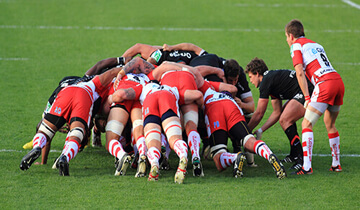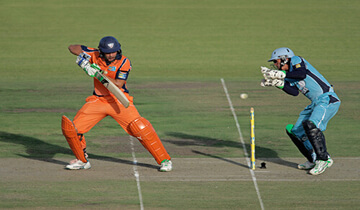What Does WHIP Measure?
WHIP calculates the average number of walks and hits a pitcher surrenders per inning of work. A walk occurs when a pitcher throws four balls outside of the strike zone, allowing the batter to advance to first base. A hit represents any time a batter successfully reaches base by hitting the ball and getting on first base, second base, third base, or scoring a home run.
By combining walks and hits into one metric, WHIP accounts for the two main ways a batter can become a baserunner against a pitcher. This provides a more comprehensive evaluation of a pitcher’s skill in limiting batters’ ability to get on base and score runs. The lower a pitcher’s WHIP, the better he is at preventing walks and hits.
Importance of WHIP
WHIP is considered one of the most predictive stats in baseball. It offers a glimpse into a pitcher’s overall command, control, and ability to minimize baserunners. Pitchers who consistently post low WHIPs tend to be very successful in preventing runs.
The major league average for WHIP is around 1.30. The best pitchers in baseball will often have WHIPs below 1.10 or even 1.00 over a full season. Anything above 1.30 starts to be concerning, while WHIPs above 1.50 indicate very poor performance. Evaluating WHIP is a key part of assessing a pitcher’s value and ability to help a team win games by limiting scoring.
In summary, WHIP gives baseball analysts and fans a quick way to understand how successful a pitcher is at minimizing baserunners and runs scored. It captures a pitcher’s walks and hits allowed into one number that generalizes their ability to go deep into games without allowing scores. WHIP is a staple of pitcher evaluation and helps paint a full picture of their performance.
How many players on a baseball team are essential for a pitcher to hone their whip technique. During team practices and games, pitchers often work closely with catchers to fine-tune their pitches and ensure they are delivered with precision and deception.
How WHIP is Calculated in Baseball
The Formula
The formula for WHIP is:
WHIP = (Walks + Hits) / Innings Pitched
“Walks” refers to the number of batters the pitcher allows to reach first base via a base on balls, also known as a “walk.” “Hits” includes all types - singles, doubles, triples and home runs. “Innings pitched” includes fractional innings, such as 5.2 IP or 7.1 IP.
Example WHIP Calculation
Here is an example WHIP calculation:
Pitcher A:
- 90 innings pitched
- 30 walks
- 100 hits
WHIP = (Walks + Hits) / Innings Pitched = (30 + 100) / 90 = 130 / 90 = 1.44
Therefore, Pitcher A has a WHIP of 1.44 for the season based on allowing 30 walks and 100 hits over 90 innings pitched.
The lower a pitcher’s WHIP, the better, as this indicates the pitcher allows fewer baserunners per innings pitched. Most elite major league pitchers will have a WHIP under 1.30 over a full season. WHIP is a useful statistic to evaluate a pitcher’s ability to minimize baserunners and prevent runs from scoring.
What a Pitcher’s WHIP Tells Us
A Low WHIP is Good
A low WHIP (walks plus hits per innings pitched) indicates that a pitcher does not allow many baserunners per inning pitched. This is a positive sign for a pitcher, as it means they are effective at preventing the opposing team from getting runners on base and eventually scoring runs.
Pitchers with a low WHIP are adept at inducing weak contact from batters resulting in outs rather than baserunners. Elite pitchers will often have WHIPs below 1.20 over a full season. The lower the WHIP, the better for the pitcher.
A High WHIP is Problematic
On the other hand, a high WHIP shows that a pitcher tends to allow a high number of batters to reach base per inning via walks and hits. This creates many run-scoring opportunities for the opposing offense.
Pitchers with consistently high WHIPs around 1.50 or above generally struggle with command, walking too many batters and giving up hard contact that leads to base hits. The more runners a pitcher puts on base, the more likely it is those runners will eventually score and damage the pitcher’s effectiveness.
WHIP Summary
In summary, WHIP is a useful metric to evaluate a pitcher’s ability to prevent baserunners and minimize run-scoring chances for the opponent. The lower the WHIP, the better the pitcher is performing. WHIP provides an easy way to glimpse a pitcher’s effectiveness or lack thereof when taking the mound.
The WHIP Statistic: Useful but Imperfect
WHIP Only Accounts for Walks and Hits
The main limitation of WHIP is that it only accounts for walks and hits - the two ways a batter can directly reach base against a pitcher. However, there are other events that can put runners on base that are not factored into WHIP, such as errors, fielder’s choices, and hit batters. A pitcher could allow several baserunners to reach via these other methods in an outing, yet still end up with a very good WHIP. This statistic also does not differentiate between types of hits. A solo home run counts the same as a single in terms of WHIP, even though the home run is much more damaging.
WHIP Does Not Measure Runs Allowed
Additionally, WHIP focuses purely on baserunners allowed rather than runs allowed. But in baseball, the objective is to prevent runs from scoring. A pitcher could have a poor WHIP by allowing many walks and singles in an outing, but may not allow many runs to cross the plate. On the flip side, a pitcher with a stellar WHIP could make one mistake that leads to multiple runs scoring on a home run. So WHIP does not necessarily correlate with runs and earned run average, which are more indicative of a pitcher’s actual performance.
Stolen Bases Are Not Considered
Furthermore, WHIP fails to account for stolen bases against the pitcher. A speedy runner who reaches base via a walk or single can then steal second and third, putting himself in prime position to score a run. But those extra bases gained via stolen bases are not considered in WHIP.
WHIP Has Value, But Also Limitations
In summary, WHIP can be a useful metric to broadly measure a pitcher’s ability to avoid putting runners on base. However, baseball analysts and fans should understand its limitations. Namely, that WHIP does not account for key events like errors and stolen bases, does not differentiate between types of hits, and focuses only on baserunners rather than runs allowed. While WHIP has value in evaluating pitchers, it should always be considered alongside other important pitching metrics.
Understanding WHIP in Baseball
WHIP Ranges
Here are typical WHIP ranges and how they can be categorized:
- Excellent: WHIP under 1.00
- Great: WHIP between 1.00 and 1.10
- Average: WHIP between 1.11 and 1.25
- Below Average: WHIP between 1.26 and 1.40
- Poor: WHIP over 1.40
In general, a WHIP below 1.30 is considered good for a starter, while relievers may average a WHIP around 1.20. The best pitchers in baseball will have WHIPs closer to 1.00 or even below.
Comparing to League Average
To get a sense of a pitcher’s WHIP numbers, it helps to compare them to league averages. In 2022, the average WHIP for an MLB starting pitcher was around 1.28. The league average WHIP has stayed relatively consistent over the last decade, fluctuating between 1.27 and 1.30.
So a pitcher with a WHIP of 1.15 can be considered above average, while a 1.40 WHIP is below the norm. However, the exact league average WHIP will vary from season to season based on environmental factors like new baseballs or crackdowns on foreign substances. Checking the current league average WHIP is the best way to contextualize an individual pitcher’s number.
The elite pitchers in baseball are able to maintain WHIPs well below the league average consistently. For example, Justin Verlander led MLB in 2022 with a remarkable 0.83 WHIP over 175 innings. That level of WHIP indicates the ability to constantly pitch out of jams and limit baserunners.
In summary, WHIP is a useful statistic to evaluate pitchers. Comparing a pitcher’s WHIP to league averages, and categorizing it as excellent, great, average, below average, or poor, can give a quick assessment of their ability to limit baserunners. It is one of the best indicators of a pitcher’s overall effectiveness and control.
WHIP vs. ERA: Measuring Pitcher Effectiveness
ERA Focuses on Runs Allowed
When evaluating the performance of a pitcher in baseball, two of the most common stats to look at are WHIP and ERA. While both stats aim to measure a pitcher’s effectiveness, they go about it in different ways.
ERA, or earned run average, focuses solely on runs allowed. It calculates the average number of earned runs a pitcher gives up per 9 innings pitched. While useful, ERA doesn’t account for unearned runs or baserunners allowed. A pitcher could have a solid ERA but still put a lot of runners on base.
WHIP Looks at Baserunners Allowed
That’s where WHIP comes in. WHIP stands for walks plus hits per inning pitched. As the name suggests, it measures the average number of walks and hits a pitcher surrenders per inning. WHIP provides a wider lens on a pitcher’s ability to prevent baserunners. A lower WHIP indicates greater success keeping opposing batters off base.
Say a pitcher has a 3.50 ERA but a 1.30 WHIP. The ERA suggests he is an above average pitcher. However, the WHIP indicates he puts a lot of runners on base, which could lead to more runs scoring in the future.
Together They Provide a Complete Picture
Looking at ERA and WHIP together gives a more complete evaluation of a pitcher’s performance. ERA judges their ability to prevent runs while WHIP judges their ability to prevent baserunners. A pitcher with a low ERA and low WHIP is truly excelling at their job.
In summary, ERA focuses on runs allowed while WHIP provides a wider look at baserunners allowed. Together they paint a fuller picture of a pitcher’s effectiveness. WHIP accounts for a pitcher’s performance beyond just earned runs surrendered. For a full evaluation of a pitcher, both WHIP and ERA are useful stats to analyze.
Notable WHIP Statistics in Major League Baseball
Best Single-Season WHIP
The record for lowest single-season WHIP belongs to Pedro Martinez. In 2000, pitching for the Boston Red Sox, Martinez registered an astounding 0.737 WHIP. That season, he allowed only 128 hits and 32 walks over 217 innings pitched. Martinez’s mark edges out Guy Hecker’s 0.763 WHIP in 1882 and Tim Keefe’s 0.802 WHIP in 1888.
In the modern pitching era, some of the best single-season WHIP totals include Nolan Ryan (0.875 in 1972), Greg Maddux (0.896 in 1994), and Clayton Kershaw (0.915 in 2016). Pitching today’s game with lower mounds and livelier baseballs makes Martinez’s 0.737 WHIP in 2000 even more remarkable.
Best Career WHIP
When it comes to career records, 1880s pitcher Tim Keefe holds the MLB record with a 0.953 WHIP. He tops later Hall of Famers Addie Joss (0.968) and Ed Walsh (0.996).
Among modern players, Pedro Martinez (0.995), Mariano Rivera (1.000), Hoyt Wilhelm (1.047), and Clayton Kershaw (1.003) rank among the all-time leaders in career WHIP. Kershaw is the only active player with a chance to catch Keefe’s career mark.
Lowest WHIP by Active Players
Clayton Kershaw leads active MLB players with a career 1.003 WHIP over 15 seasons. Washington’s Max Scherzer (1.110), St. Louis’ Adam Wainwright (1.130), Houston’s Justin Verlander (1.133), and New York’s Jacob deGrom (1.094) round out the top five among current players.
With his exceptional command and ability to limit baserunners, Kershaw remains the frontrunner to post one of the lowest WHIPs in MLB history when he eventually retires. His sustained excellence gives him a chance at the all-time record.
Conclusion
Baseball fans love stats. Yet with the explosion of advanced analytics, sometimes simple traditional stats still have value. One such statistic is WHIP, which stands for Walks and Hits per Innings Pitched.
WHIP measures a pitcher’s effectiveness by calculating how many baserunners they allow per inning. It is calculated by taking the number of walks and hits a pitcher surrenders and dividing that by the number of innings pitched. The lower a pitcher’s WHIP, the better they are at minimizing batters getting on base.
The beauty of WHIP is its simplicity. While metrics like FIP and xFIP require complex formulas, WHIP only uses two basic pitching outcomes. This makes it easy to calculate and interpret. A WHIP below 1.30 is excellent, while anything over 1.50 is quite poor.
Of course, WHIP has limitations. It treats all hits equally, rather than accounting for singles versus home runs. Walks are also not weighted for intentional passes. Nonetheless, WHIP provides a quick snapshot of pitcher effectiveness that fans can easily grasp. It remains a valuable traditional stat to evaluate pitchers when used properly alongside other metrics.







































